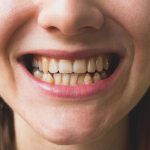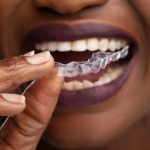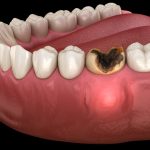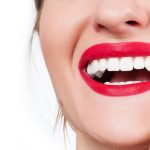Understanding Oral Hygiene: What Causes White Stringy Residue in Your Mouth After Brushing?

Oral hygiene is an essential aspect of maintaining good health. Brushing your teeth twice a day is one of the most basic and effective ways to keep your teeth and gums healthy. However, sometimes, after brushing, you might notice a white stringy residue in your mouth that can leave you feeling concerned and confused. This residue is not a cause for panic, but it’s essential to understand what it is and what causes it to prevent any potential dental issues. The white stringy residue that you might experience after brushing is commonly referred to as oral mucus. While it might sound gross, oral mucus is a natural and necessary part of your oral health. It’s produced by your salivary glands and helps to keep your mouth lubricated, which aids in speaking, eating, and swallowing. However, when excess mucus is produced, it can lead to discomfort and an unsightly appearance. In this article, we’ll delve into the causes of white stringy residue, how to prevent it, and when to seek professional help.
Oral hygiene refers to the practices that help maintain the cleanliness and health of the mouth and teeth. It involves the regular brushing and flossing of teeth, as well as the use of mouthwash or other oral care products. Good oral hygiene can help prevent the buildup of harmful bacteria that can lead to tooth decay, gum disease, and other oral health problems. In addition to daily oral care, regular dental checkups and professional cleanings are also important for maintaining good oral hygiene. A white stringy residue in the mouth after brushing can be indicative of poor oral hygiene or the buildup of plaque and bacteria on the teeth and gums. Therefore, it is important to practice good oral hygiene habits to keep your mouth healthy and free of harmful bacteria.
Oral hygiene is an essential aspect of maintaining good health and preventing various dental problems. It involves the routine practice of keeping one’s mouth clean and healthy, which includes brushing teeth twice a day, flossing, and rinsing with mouthwash. Neglecting oral hygiene can lead to various dental issues, including bad breath, tooth decay, gum disease, and even tooth loss. To maintain good oral hygiene, it is necessary to practice proper brushing techniques, use the right toothbrush, and maintain a balanced diet. Regular dental visits are also essential to ensure that any dental problems are identified and treated early on. In summary, proper oral hygiene is crucial for maintaining overall health and preventing dental problems that can impact one’s quality of life.
Brushing is an integral part of oral hygiene, which is essential for maintaining good dental health. It involves the use of a toothbrush and toothpaste to remove plaque, bacteria, and food particles from the teeth and gums. Regular brushing can prevent cavities, gingivitis, and bad breath. However, it is important to brush properly, using a circular motion and reaching all areas of the mouth. Failing to brush effectively can lead to the buildup of bacteria and a white stringy residue in the mouth after brushing. Therefore, brushing twice a day, for at least two minutes each time, is important for maintaining oral health and preventing dental problems.
What is White Stringy Residue?
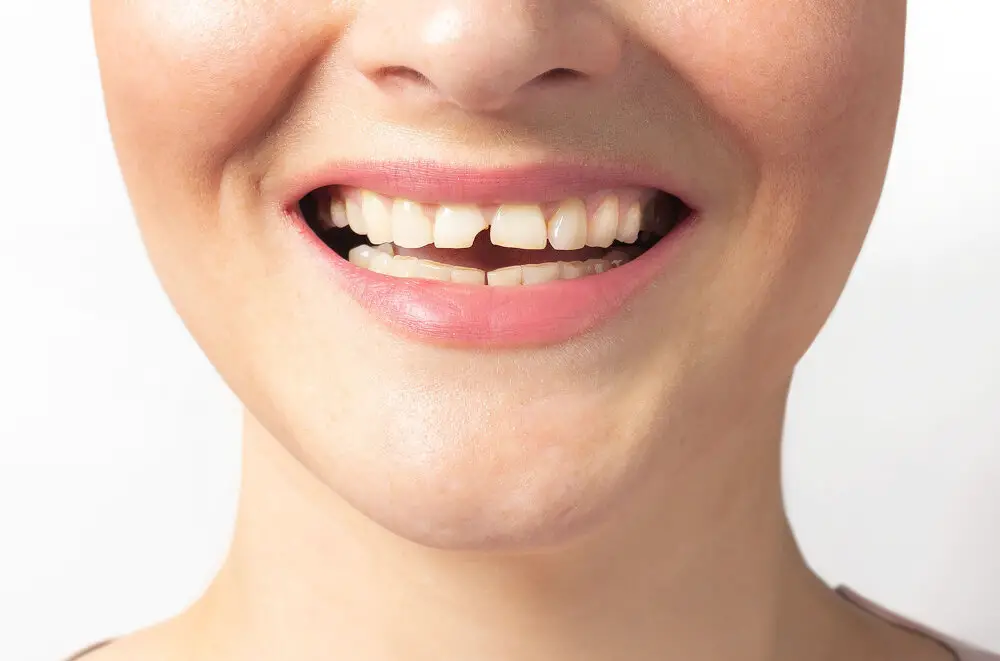
White stringy residue in the mouth is a common occurrence that many people experience after brushing their teeth. This residue, also known as oral mucosa or plaque, is made up of a combination of bacteria, food particles, and dead skin cells that accumulate on the surface of teeth and gum tissues. While brushing helps to remove some of this buildup, it is not always enough to completely eradicate it. As a result, some people may notice a lingering white stringy residue after brushing, which can be unsightly and uncomfortable. There are several factors that can contribute to the development of white stringy residue in the mouth. Poor oral hygiene habits are one of the most common causes, as regular brushing and flossing are necessary to remove bacteria and debris from the mouth. Certain medications, such as antihistamines and decongestants, can also cause dry mouth, which can lead to an increase in bacteria and plaque buildup. Additionally, consuming sugary or acidic foods and drinks can create an environment in the mouth that is conducive to bacterial growth, leading to the development of white stringy residue. Understanding the causes of this condition can help individuals take steps to prevent it, such as improving their oral hygiene habits, staying hydrated, and avoiding sugary or acidic foods and drinks.
Residue refers to the leftover material that remains after something has been cleaned or removed. In the context of oral hygiene, residue can indicate a buildup of bacteria, food particles, or other substances in the mouth. One common type of residue that people may experience after brushing their teeth is a white stringy or slimy substance. This can be caused by a variety of factors, such as inadequate brushing technique, dehydration, or certain medical conditions. While this residue is not necessarily harmful, it can be unsightly and may indicate that more thorough brushing and flossing is needed to maintain optimal oral health.
The sensation of having white stringy residue in your mouth after brushing can be quite unpleasant. It feels like a slimy film coating the teeth and tongue, making it difficult to speak or swallow comfortably. The texture is often described as stringy, sticky, or gooey, which can be quite alarming if you’re not familiar with it. Some people may also experience a bitter or metallic taste in their mouth, which can further add to the discomfort. Overall, the feeling of white stringy residue in the mouth is unpleasant and can be a sign of poor oral hygiene or underlying health issues.
The white stringy residue that appears in your mouth after brushing your teeth is most commonly caused by a buildup of plaque. Plaque is a sticky film of bacteria that forms on teeth and gums and can lead to tooth decay and gum disease if not removed regularly through proper oral hygiene practices. In addition to plaque, other factors that can contribute to this residue include dry mouth, consuming certain foods and beverages, and using certain medications. Maintaining good oral hygiene habits, such as brushing twice a day, flossing daily, and visiting the dentist regularly, can help prevent the buildup of plaque and reduce the occurrence of this white stringy residue.
Causes of White Stringy Residue
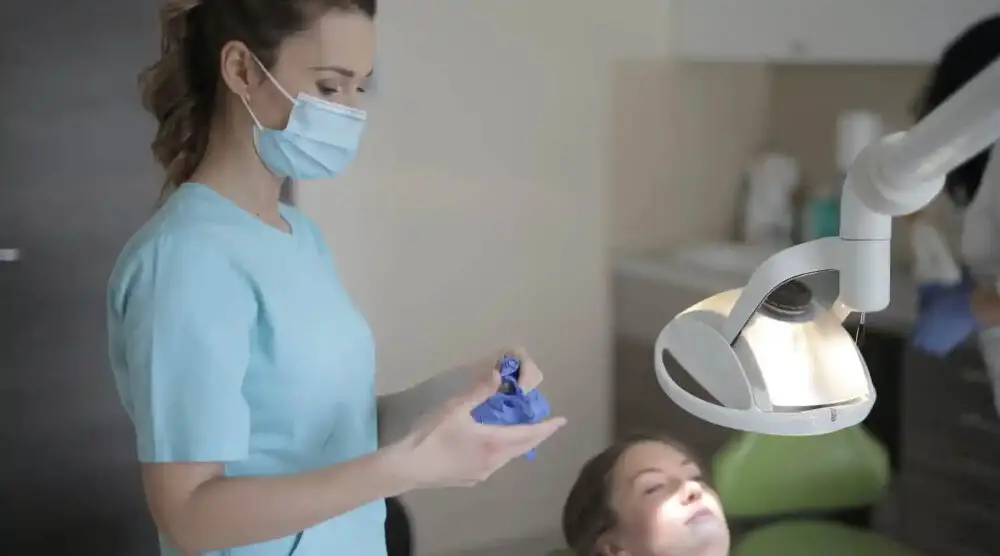
White stringy residue after brushing can be a frustrating experience for many people. Several factors can cause this condition. One of the most common causes is the accumulation of plaque or debris on the tongue or teeth. Plaque is a sticky film that forms on the teeth and gums and contains bacteria. When left unchecked, plaque can harden into tartar, causing inflammation and gum disease. Brushing and flossing regularly can help remove plaque and prevent the formation of tartar. Another common cause of white stringy residue is the use of certain toothpaste formulas. Some toothpaste brands contain ingredients that can cause a buildup of foam or residue in the mouth. This residue can be difficult to remove and may require multiple rinses or swishes with water. To avoid this problem, try switching to a toothpaste without sulfates, which are often responsible for creating the foamy residue. Additionally, using a tongue scraper can help remove any buildup on the tongue, reducing the likelihood of white stringy residue after brushing.
Insufficient brushing is one of the major causes of white stringy residue in the mouth after brushing. It occurs when the teeth are not brushed properly, leaving behind food particles, bacteria, and plaque. These elements accumulate on the teeth and between the gums, forming a sticky and stringy film that is difficult to remove. If this residue is not removed, it can lead to tooth decay, gum disease, and bad breath. Therefore, it is essential to brush your teeth thoroughly for at least two minutes, twice a day, using a fluoride toothpaste and a soft-bristled toothbrush. Additionally, flossing and using mouthwash can help to remove any remaining residue and prevent further buildup. By maintaining good oral hygiene practices, you can ensure a healthy and clean mouth, free of white stringy residue.
Poor brushing technique is one of the main culprits behind the white stringy residue that you may notice in your mouth after brushing. When you don’t brush your teeth properly, plaque can build up on your teeth and gums, leading to bacterial growth and bad breath. Additionally, using too much pressure when brushing or brushing too aggressively can damage your gums and tooth enamel. It’s essential to use a soft-bristled toothbrush and to brush gently in circular motions to remove plaque effectively. Proper technique, combined with regular flossing and visits to the dentist, can help keep your mouth healthy and free of white stringy residue.
Maintaining good oral hygiene is essential for overall wellbeing. In addition to brushing and flossing, using certain dental products can help to prevent oral health problems. Mouthwash and fluoride toothpaste, for instance, can help to kill bacteria and strengthen tooth enamel, respectively. Electric toothbrushes are also useful as they can remove plaque more effectively than manual toothbrushes. Additionally, interdental brushes and water flossers can help to clean areas that are difficult to reach with regular brushing and flossing. By incorporating these products into a daily oral hygiene routine, individuals can reduce the risk of developing oral health issues and enjoy a healthy smile.
Medical conditions can play a significant role in the development of white stringy residue in your mouth after brushing. Certain diseases such as thrush, oral lichen planus, and leukoplakia can cause the buildup of white, stringy material in the mouth. Thrush is a fungal infection that can cause white patches and stringy discharge in the mouth, while oral lichen planus is a condition that causes white patches and painful ulcers. Leukoplakia is a condition where thick, white patches form on the gums, cheeks, or tongue. It is essential to consult with a dentist or doctor if you experience persistent white stringy residue in your mouth after brushing to rule out any underlying medical conditions.
Prevention and Treatment

Prevention and treatment are essential to maintain good oral hygiene and prevent the buildup of white stringy residue in your mouth. Firstly, prevention can be achieved by adopting a regular brushing and flossing routine. Brushing twice a day with a fluoride toothpaste can help remove plaque and bacteria from your teeth, preventing the formation of white stringy residue. Flossing at least once a day can also help remove any food particles that may be stuck between your teeth, reducing the risk of bacterial growth. Additionally, using an antiseptic mouthwash can help kill bacteria and freshen your breath. Secondly, if white stringy residue has already formed in your mouth, treatment options are available. One of the most effective treatments is to visit your dentist for a professional cleaning. During a cleaning, your dentist will remove any plaque, tartar, or bacteria buildup from your teeth and gums, which can help reduce the appearance of white stringy residue. Alternatively, you can try using a tongue scraper to remove any bacteria that may be present on your tongue. Additionally, using a mouthwash specifically designed to combat bad breath can help eliminate the underlying causes of white stringy residue, such as bacteria and food particles. By adopting these prevention and treatment measures, you can maintain good oral hygiene and keep your mouth healthy and clean.
Proper brushing technique is essential for maintaining good oral hygiene. Using a soft-bristled toothbrush, one should brush their teeth for a minimum of two minutes, twice a day. It is important to brush all surfaces of the teeth, including the front, back, and chewing surfaces, as well as the tongue and gums. One should use gentle circular motions and avoid scrubbing too hard, as this can damage the enamel and gums. Additionally, it is important to replace your toothbrush every three to four months or when the bristles become frayed. By following these simple steps, one can maintain a healthy and clean mouth, free from any white stringy residue after brushing.
Using appropriate dental products is crucial for maintaining good oral hygiene. Toothpaste containing fluoride is recommended as it helps to prevent tooth decay by strengthening the enamel. Additionally, using a toothbrush with soft bristles is gentle on the gums and teeth, and helps to remove plaque and bacteria effectively. Flossing with dental floss is also important to remove food particles and plaque from between the teeth and gum line. Mouthwash containing antibacterial agents can further help to reduce bacteria in the mouth and freshen breath. By using these appropriate dental products consistently, you can maintain good oral hygiene and prevent the build-up of white stringy residue that can occur after brushing.
Visiting the dentist regularly is an essential part of oral hygiene. Regular dental check-ups help in identifying dental problems at an early stage, preventing them from becoming severe. During the dental visit, the dentist examines the teeth, gums, tongue, and other oral tissues for any signs of decay, infection, gum disease, or oral cancer. The dentist also cleans the teeth, removing plaque and tartar, which are the major causes of dental problems. Regular dental check-ups help in maintaining good oral health, preventing tooth decay, bad breath, and other dental issues. Therefore, it is recommended to visit the dentist every six months for a routine check-up and cleaning.
If white stringy residue persists in your mouth even after brushing, it may indicate an underlying medical condition. In such a case, it is crucial to seek medical treatment promptly. Some of the common medical reasons for this condition are oral thrush, dry mouth, or gastroesophageal reflux disease (GERD). Oral thrush is a fungal infection caused by the candida fungus and is common in people with weakened immune systems. Dry mouth, on the other hand, can result from medication, dehydration, or underlying medical conditions. GERD occurs when stomach acid flows back into the esophagus, causing heartburn and other symptoms. Seeking medical treatment not only helps to alleviate the symptoms but also prevents further complications.
White stringy residue is a common oral hygiene issue that many people face after brushing their teeth. The main causes of this problem include a buildup of plaque, bacteria, and food particles in the mouth. Poor oral hygiene habits, including infrequent brushing and flossing, can also contribute to the formation of white stringy residue. To prevent or treat this issue, it is essential to maintain a consistent oral hygiene routine that includes brushing twice a day, flossing regularly, and using mouthwash. Additionally, consuming a healthy diet and avoiding sugary and acidic foods can help to reduce the likelihood of developing white stringy residue. In some cases, professional dental cleaning may be necessary to remove stubborn buildup and prevent more serious oral health issues from developing.
Maintaining good oral hygiene is crucial not only for having a healthy mouth but also for overall health. Poor oral hygiene can lead to various dental problems such as tooth decay, bad breath, and gum disease. Moreover, it can also cause serious health issues like heart disease, diabetes, and respiratory infections. Brushing twice a day, flossing regularly, and using mouthwash can help remove food particles and plaque buildup that can lead to these problems. Additionally, regular dental check-ups and cleanings can help identify and address any potential issues before they become more serious. By prioritizing good oral hygiene, you can not only preserve the health of your mouth but also contribute to your overall well-being.
Oral hygiene is an essential aspect of maintaining a healthy lifestyle. Neglecting our teeth and gums can lead to various dental problems, including tooth decay, gum disease, and bad breath. It is crucial to brush our teeth twice a day, floss regularly, and use mouthwash to remove any food particles and bacteria that may be left behind. One of the most common issues that people face after brushing is the appearance of white stringy residue in their mouth. This is often caused by plaque buildup, which can be prevented by following a strict oral hygiene routine. By taking care of our oral health, we can ensure that our teeth and gums remain healthy, strong, and free from any diseases.
Conclusion
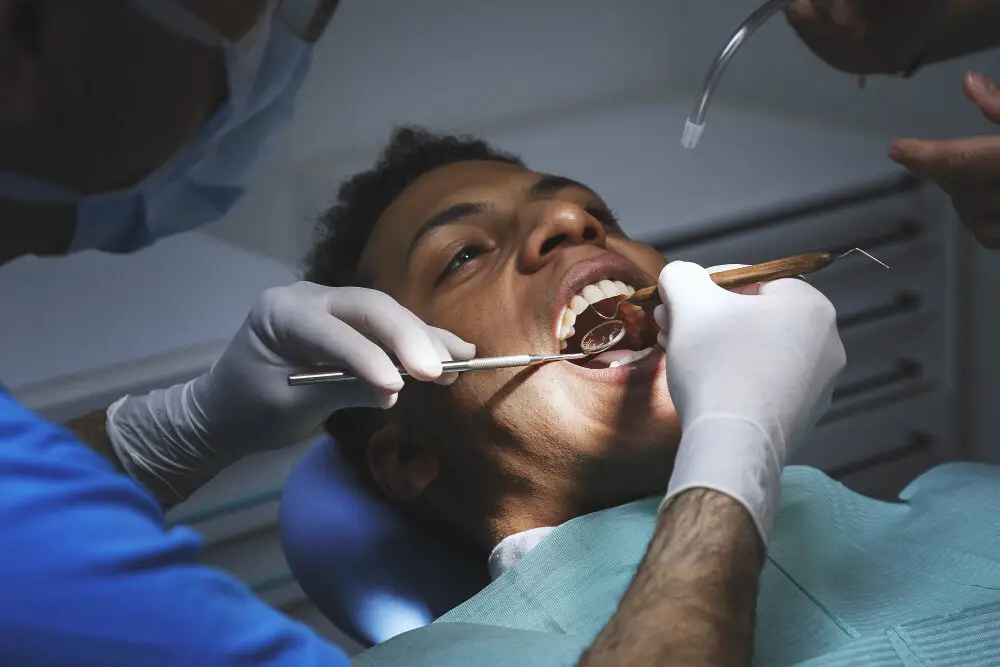
In conclusion, white stringy residue in your mouth after brushing can be caused by a variety of factors related to oral hygiene. Poor brushing technique, inadequate rinsing, and the use of certain dental products can all contribute to this issue. However, it is important to note that this residue may also be a symptom of underlying medical conditions such as thrush or dry mouth syndrome. Therefore, it is crucial to maintain good oral hygiene practices and consult a dental professional if this issue persists. By taking proactive steps to care for your oral health, you can prevent the buildup of white stringy residue and maintain a healthy, vibrant smile.
